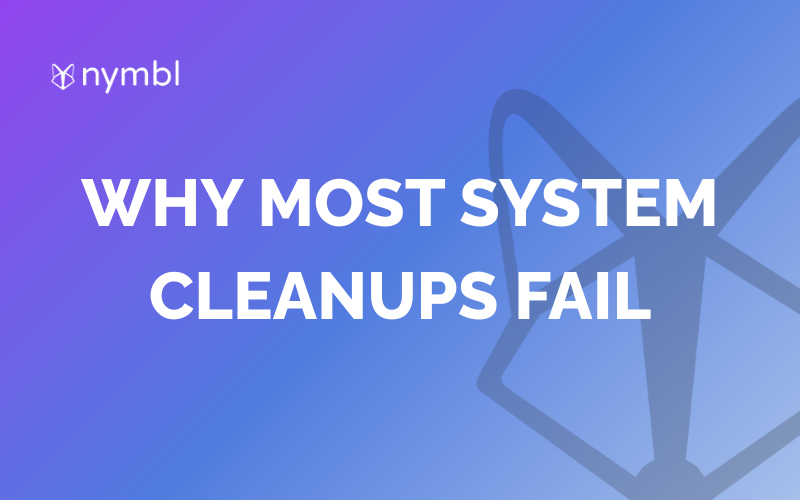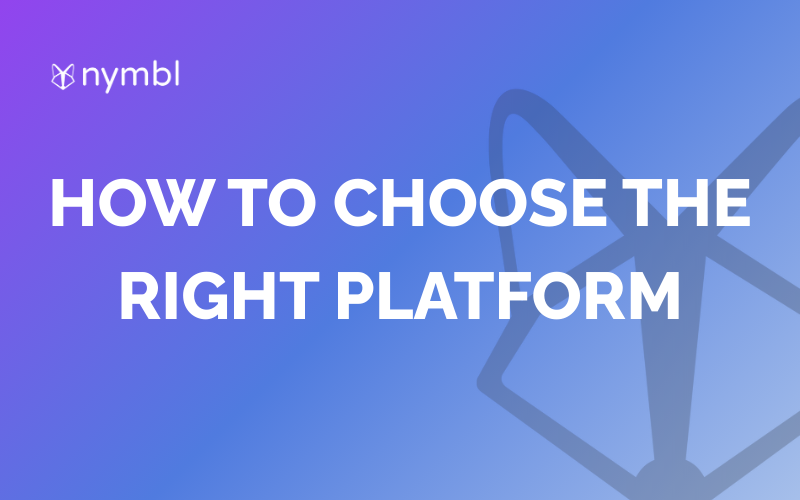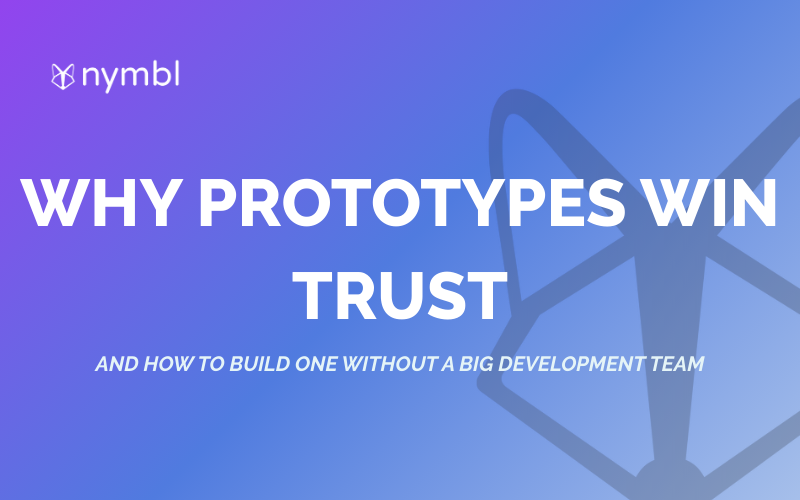For companies in their early stages, like startups, MVPs are crucial projects for making the most of your development resources while allowing room for growth and feedback in the future. Apps always need revision, and MVPs are primarily designed for functionality while remaining scalable. Platforms like Facebook and Amazon started as MVP platforms and grew into something much bigger than their development teams might have ever foreseen.
MVPs are important because they act as the testing ground for your product and result in faster iterations. According to some statistics, 42% of startup failures resulted from lacking market need for the products. Quality MVPs can address these kinds of failures by providing an adequate testing ground that will result in invaluable feedback.
If your business is in need of an MVP, consider the following questions: can you use low-code/no-code platforms to build an MVP? What skills are necessary to build an MVP? What are the steps to building an MVP? How can Nymbl help you build an MVP?
Read more to learn about how you can build an MVP.
Can You Use Low-Code/No-Code Platforms to Build an MVP?
The short answer to this question is yes. However, one of the factors that always comes into play with the low-code/no-code development process is the amount of flexibility and scalability it may or may not provide.
With an MVP, it is crucial to build something that is capable of expanding with your vision. This is where full-stack development comes into play. Full-stack development incorporates both back-end and front-end development, which means the developer will have control over everything from the customer-facing UI to the database, and everything else in between. A full-stack developer will have a much better sense of how to build an application that will be easier to update in the future.
The complexity of your MVP will determine whether or not low-code/no-code will get the job done. While using low-code/no-code software development can reduce development costs, it leaves you more at risk of getting locked in with a vendor, compromising on security, and limiting what you might be able to do with the product in the future, especially when adding new features.
What Skills Are Necessary to Build an MVP?
MVP development requires multiple skills, including coding and project management. Below are some of the basic skills required for building an MVP.
Front-End Development
While achieving some visions with low-code/no-code development is possible, full-stack development is the best method for ensuring possible changes after feedback and scalability. Therefore, front-end development skills are crucial. These skills include knowledge of programming languages like HTML, CSS, and JavaScript and data management languages like SQL.
A front-end developer must also understand how the designs and layouts can affect the user experience.
Other important factors to consider for front-end development include expertise in frameworks like React, debugging proficiency, and responsive design competence.
Back-End Development
A full-stack developer will have a solid grasp of not only front-end development but also back-end development.
While front-end deals more with user experience and UI design, back-end development focuses more on managing data, integrating platforms, and the general framework of a website or application. Back-end development requires knowledge of coding languages like Java, Python, and PHP and a working knowledge of APIs, databases, and data structures.
Other back-end development tasks include handling servers, mapping data, and troubleshooting bugs.
Learn more about Nymbl’s full stack development services here.
Project management
Minimum viable product development requires a vision beyond immediate gratification. This is where project management skills come in handy. You need to be able to communicate the big picture and the details and understand how to best manage your team to accomplish your goal within your deadline.
What Are the Steps to Building an MVP
Building an MVP requires a significant amount of leg work at the beginning to lay down a foundation that your full-stack developers can refer to.
- What's the Problem?
A good app, platform, or idea aims to present a solution to an identifiable problem. Taking the time to analyze the problem your MVP will solve is crucial as it will ultimately determine what kinds of features are included in the final product.
- Know Your Audience
You can't please everyone. Ultimately, your product will have to address the concerns of a target demographic in order to be successful in the long run. If you try to be all things to all people, you may miss out on early adopters' initial support that may eventually launch your business into something bigger.
- Focus on Essential Features
Ultimately, the essential features are going to vary depending on the problem you are trying to address and who your potential customers are. At this stage, consider what kinds of features you could add down the road. While you won't be able to include every feature listed, the minimum amount of features necessary to make it functional should be the priority.
- It's Time to Build
When building an MVP, meticulous scrutiny is not necessary. The whole point of the MVP is to be functional. After a trial period, your development team can go back and fix the problems, add features, and continue to update to make it more effective with the help of user feedback.
- Receiving Feedback
An MVP will never be perfect in the first round, and that's where stakeholders, real users, and initial clients come into the picture. Once you have the essential features in place, your first users can provide feedback on user flow, design, and functionality. If the groundwork is done correctly, expanding and improving will be much simpler by adding new features and making edits to existing features.
How Can Nymbl Help You Build an MVP?
If you are stuck in the process of developing your MVP, Nymbl is here to help. Bypass the complications that come with full-stack development with Nymbl's AI-powered full-stack development service.
Nymbl is a development company comprised of expert developers and project managers who understand the industry and can help you navigate the challenges of full-stack web development.
Remain ahead of the curve and make the most of what AI and full-stack development can accomplish together. By including AI in their coding methodologies, Nymbl will enhance your development project by optimizing the performance of your app or website, locking in detailed security measures, and decreasing time to market.
From start to finish, Nymbl's team of experts will be there to guide you through the process of developing an MVP. From choosing a tech stack to managing DevOps, Nymbl has you covered. From low-code/no-code to AI-powered full stack, Nymbl is your all-in-one solution for any software development needs.
Conclusion
For startups and established companies alike, building a good MVP can mean the difference between a failed business and a thriving one.
While low-code/no-code might seem more cost-effective initially, full-stack development will ensure you have the flexibility and scalability necessary for your new product to be modified and improved in the future.
Full stack development includes both front-end and back-end development, which requires skills like UI design, data management, and knowledge of coding languages like JavaScript, HTML, and CSS.
When building an MVP, it is crucial to break down and analyze the problem you want to address with your product. Once you know what problem you are trying to solve, determine your target audience, define essential features, and build.






.png)


